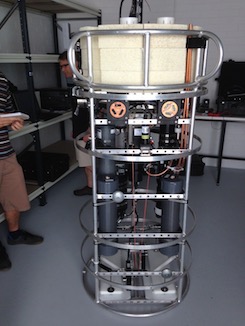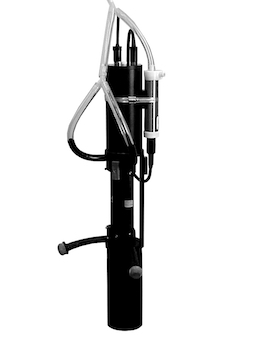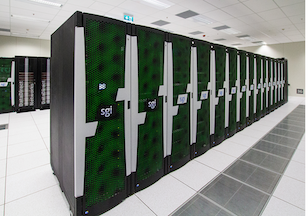Facilities
The RSSRG has set up (or has access to) a number of research facilities, as described below
Dark room for radiometric calibration and characterisation of field instruments.
Measurement consistency is especially important to the quality of satellite sensor validation. The RSSRG calibration facility allows optical instruments to be calibrated against a National Institute of Standards and Technology (NIST) source.
Equipment in the room includes:
2 x Optronic Laboratories Inc High-accuracy Spectral Irradiance Standard globes:
OL FEL–M (250nm – 1100nm). Serial # F–722
OL FEL–M (250nm – 1100nm). Serial # F–793 @ 8.000 Amperes
An optics Table
Spectralon Plates (100% and 20%)
Mounting equipment and baffles
Lasers (Argon, HeNe, green diode)
Ocean Optics HG–1 Mercury Argon Calibration Source
Black matte curtains and coverings.
Contact us for further information about the use of this facility.

The Thetis autonomous platform

A unique set of optical and oceanographic equipment has been put together onto a profiling platform, as shown of the left here.
Learn more about the Thetis profiler
Other field instrumentation

WET Labs AC-S spectrophotometer (the picture on the left)
ASD fieldspec radiometer and associated equipment (panels, GPS, backpack etc)
Microtops sun photometer and ozonometer (with associated equipment)
LAI2200 leaf canopy analyser
IMO Dalec radiometer
Seabird Chlorophyll fluorometer
Hydrorad radiometer
HOBI Labs Hydroscat-6P Backscattering and fluorescence sensor
Filtration gears
Access to the Pawsey supercomputing centre
When it comes to processing large quantities of satellite remote sensing observations, or modelling radiative transfer in the ocean-atmosphere system, appropriately-sized computing resources become of prime importance.
RSSRG has some in-house servers that are used for developing and testing codes. However, we move to using the resources provided by the Pawsey Supercomputing Centre when mass calculations are at play.

Access to the “Australia Copernicus Data Hub“
The Australian Government has an agreement with the European Commission (EC), signed by Geosciences Australia (GA) on hosting the “Collaborative Ground Segment” for the Sentinel system, under the Copernicus EU programme. This agreement gives us access to the global data base of observations from these new missions (see here). This data set is now at our doorstep and we can leverage on this unique resource to develop our activity.
